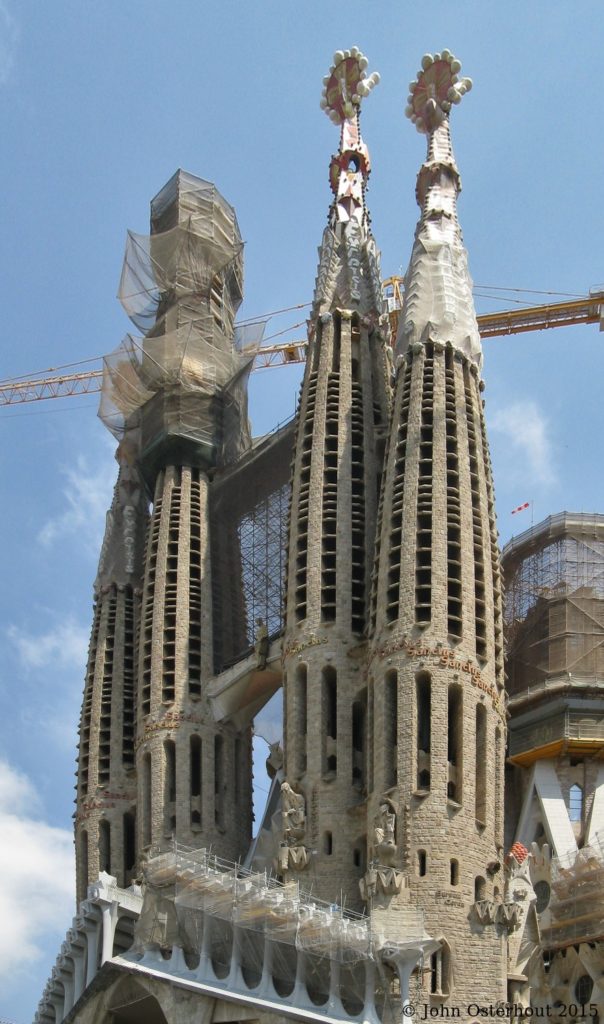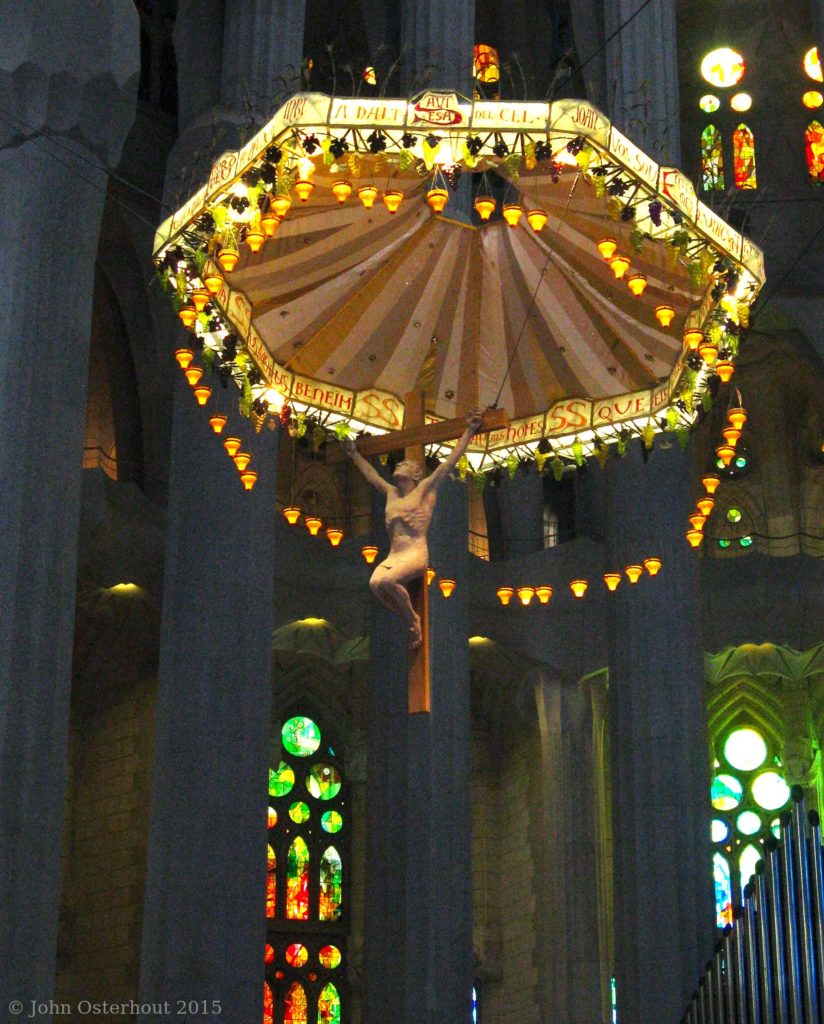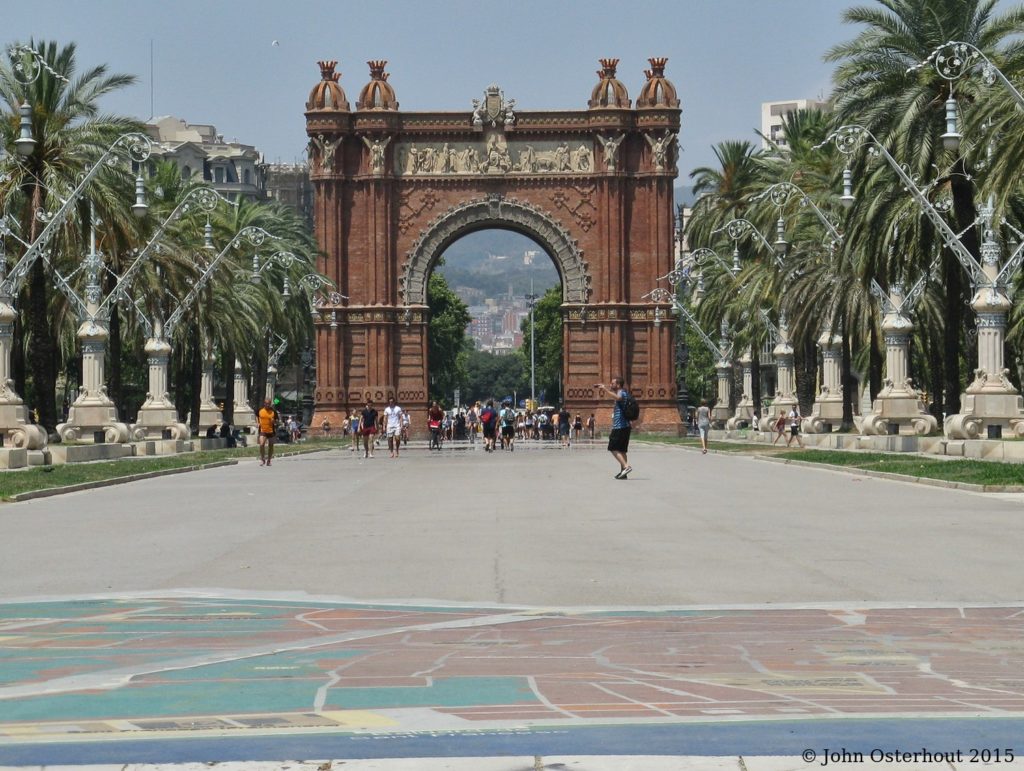I visited Barcelona in the summer of 2015 to attend a scientific meeting. Since I had a limited amount of time to explore the city this is by no means a travelog. Without further ado, Five Frames from Barcelona.
View from the Museum

Here is a view from the steps of the Museu Nacional d’Art de Catalunya, which is located in the Palu National (National Palace) at the top of Mountjuic. The four columns in the foreground were originally erected in 1919 and symbolized the four stripes of the Catalonian flag. They were demolished in 1929 as a move to destroy all the Catalanist symbols prior to the 1929 Barcelona International Exposition. The columns were replaced with the Magic Fountain of Montjuic, which can be seen just beyond the columns (see below). The columns were rebuilt in their present location in 2010.
Just behind the columns is the Magic Fountain of Montjuic, which was built for the 1929 Barcelona International Exposition. The Magic Fountain was designed by Carles Buïgas and displays water and light shows accompanied with music on the half hours after dusk on weekends. I caught one of these shows (I have pictures) and it was fun.
Between the rightmost two columns you can see a brick tower, which is one of the two Venetian Towers, so named because they are designed after the Campanile tower of St. Mark’s Basilica in Venice. The top of second column is just peeking out over the second column from the left. The Venetian Towers were also constructed for the 1929 Bacelona International Exposition and served as the entrance to the exposition. You can see another version of the Campanile tower in front of the Venetian Resort in Las Vegas, something I discovered by accident while researching the towers.
Between the middle two columns you can see the fountain at the center of the Placa d’Espana, also constructed for the International Exposition of 1929.
Between the rightmost two columns, just to the right of the Venetian Tower is part of the Plaza de Toros de las Arenas, which was described to me as “The Old Bullfighting Ring”. The building was opened in 1900 and used for boxing. It wasn’t remodeled into a bullfight arena until 1927. During the Franco era, tourism from Europe and the Americas grew around bullfights. Anti-bullfight sentiments caused bullfighting to be outlawed in Barcelona in 2010. The Arena was remodeled again into a mall with a pedestrian ring around the top and opened in 2011. I had a very nice dinner atop the Arena and ate several lunches in the mall since it was close to my meeting.
Silhouetted against the sky in the background is the Temple Expiatori del Sagrat Cor (Expiatory Church of the Sacred Heart) atop Mount Tibidabo. Construction on the Roman catholic church and minor basilica started in 1902 and was completed in 1961.
Sagrada Familia Basilica

An exterior view of the Temple Expiatori de la Sagrada Família (Expiatory Church of the Holy Family) designed by Catalan architect Antoni Gaudí. The Roman Catholic church was started in 1882 and is unfinished. Estimates for completion vary but a target date is 2026, the centenary of Gaudi’s death. The church is remarkable for its design and complexity. In this photograph, I am showing the four steeples above the Passion Facade, which is dedicated to the Passion of Christ. The steeples are dedicated to four of the apostles, James, Thomas, Philip, and Bartholomew. When completed there will be eighteen steeples, one each for the Twelve Apostles, the four Evangelists, the Virgin Mary, and Jesus Christ.
Sagrada Familia, Jesus on the Cross

An interior view of the Sagrada Familia showing Jesus on the cross suspended about the alter. This representation of Jesus on the cross is unusual because Jesus is looking up as if in supplication of God. Most representation of Jesus on the cross have him looking down or to the side.
Arc de Triomf

This is the Arc de Triomf (Triumphal Arch). It was built in 1888 by architect Josep Vilaseca i Casanovas to serve as the entrance to the 1888 World’s Fair. Unlike many similar triumphal arches, it does not commemorate victory in war.
View from the Bullring

Here is another view of the Venetian Towers of Barcelona, this time from the walking track at the top of the Plaza de Toros de las Arenas. In the middle ground you can see the Magic Fountain of Mountjuic and the Four Columns. The large buiding in the background is the Palu National which houses the Museu Nacional d’Art de Catalunya. Peeking out just to the right of the rightmost Venetian Tower is a fantastical sculpture. This is the Calatrava tower. It is a telecommunications tower built for the Barcelona Olympic Games in 1982. It was the symbol of the 1982 Olympic Games Its creator, Santiago Calatrava, said that “it opens the way to new galaxies.”
These photos were all taken with a Canon PowerShot A720 IS. They were processed with Darktable a free program available for Windoze, Mac, and Linux.
Been there, done that bur did not capture it on film as well as you. Jesus on the cross in the Sagrada Familia is fondly referred to by me and Cheryl as the parachuting Jesus.